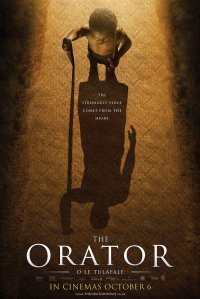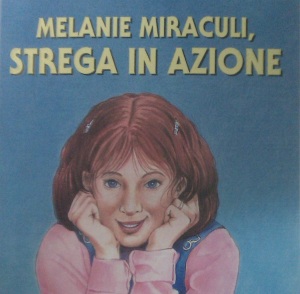Sono appena tornato dalla conferenza organizzata dall’Australasian Association for Literature alla Monash University di Caulfield, Melbourne, e ho pensato che a qualcuno potrebbe interessare una rapida cronaca. Quest’anno il tema era Letteratura e traduzione, e ho deciso di presentare una proposta, per vedere se la mia avventura lievemente accademica al simposio di Sydney fosse soltanto una casualità. Sorprendentemente (giacché sono un umile traduttore, e non un ricercatore universitario), hanno accettato la mia proposta e ho finito col presentare un articolo intitolato Translation as Re-creation, che probabilmente pubblicherò sul blog nelle prossime settimane.
 L’organizzazione era impeccabile, gli organizzatori gentilissimi, e c’era un vero e proprio sciame di idee interessanti che ronzavano per l’edificio H del campus di Caulfield. Prima di tutto abbiamo avuto l’onore di ascoltare la fantastica introduzione del relatore principale, David Damrosch, autore di What is World Literature?, stella della letteratura comparata e peso massimo nel suo campo di studi. Il suo atteggiamento modesto è davvero una boccata d’aria fresca, considerato che ha studiato a Yale ed è titolare della cattedra di Letteratura Comparata ad Harvard. Damrosch è in grado di spiegare la complessità della letteratura mondiale con sorprendente vivacità, comunicando brillantemente la propria passione e il proprio amore per la letteratura. Ti parla di Gilgamesh, aggiunge qualche riferimento a qualche tavoletta azteca, e poi mette su un giocoso ma impeccabile accento russo leggendo le battute del fittizio scrittore russo Vladimir Brusiloff’s nel racconto breve “The Clicking of Cuthbert”, di P. G. Wodehouse. Lasciatemelo dire, è ben difficile parlare dopo di lui.
L’organizzazione era impeccabile, gli organizzatori gentilissimi, e c’era un vero e proprio sciame di idee interessanti che ronzavano per l’edificio H del campus di Caulfield. Prima di tutto abbiamo avuto l’onore di ascoltare la fantastica introduzione del relatore principale, David Damrosch, autore di What is World Literature?, stella della letteratura comparata e peso massimo nel suo campo di studi. Il suo atteggiamento modesto è davvero una boccata d’aria fresca, considerato che ha studiato a Yale ed è titolare della cattedra di Letteratura Comparata ad Harvard. Damrosch è in grado di spiegare la complessità della letteratura mondiale con sorprendente vivacità, comunicando brillantemente la propria passione e il proprio amore per la letteratura. Ti parla di Gilgamesh, aggiunge qualche riferimento a qualche tavoletta azteca, e poi mette su un giocoso ma impeccabile accento russo leggendo le battute del fittizio scrittore russo Vladimir Brusiloff’s nel racconto breve “The Clicking of Cuthbert”, di P. G. Wodehouse. Lasciatemelo dire, è ben difficile parlare dopo di lui.
Sfortunatamente per il resto della conferenza c’erano sempre cinque o sei sessioni contemporaneamente, quindi ho dovuto perdermi tutta una serie di relazioni che promettevano molto bene.
La prima sessione a cui ho assistito era intitolata Il processo traduttivo. Ho apprezzato molto le riflessioni di Marc Orlando sulla sua traduzione in francese di Mau Moko, un libro scritto in inglese e maori sull’arte dei tatuaggi facciali nella storia polinesiana, caratterizzato da un attivismo politico che si è dimostrato una bella sfida per il traduttore (eh già, anche gli intenti vanno tradotti). Il suo uso della musica (quattro diversi arrangiamenti de La valse d’Amelie) per dimostrare come la stessa opera si può arrangiare diversamente a seconda delle intenzioni, del contesto e del pubblico riecheggia poi uno degli argomenti che ho proposto nella mia relazione e cioè “se chi esegue una cover, o la reinterpretazione di un pezzo di musica classica è considerato un musicista, perché mai il traduttore non dovrebbe essere considerato uno scrittore?” Ho inoltre apprezzato molto il suo approccio pragmatico e moderno al problema della stranierizzazione (ossia “lasciare in pace l’autore, portare il lettore verso l’autore”) e dell’addomesticamento (“lasciare in pace il lettore, portare l’autore verso il lettore”) che lio porta ad identificare uno spazio del traduttore, una terra di nessuno a metà fra i due poli, dove autore e lettore dovrebbero incontrarsi. Di nuovo, avevo proposto un’idea simile nella mia relazione al simposio di Sydney, mettendo in guardia rispetto all’eccessiva adesione ai poli teorici. Dopo di lui, il pirotecnico Royall Tyler ci ha regalato un’illuminante analisi della traduzione dei grandi poemi epici medievali giapponesi, con tanto di rivisitazione pop di un’opera musicale e poetica della tradizione giapponese.
Nella sessione intitolata Censura e ideologia, Belinda Calderone ha analizzato il modo in cui le traduzioni delle fiabe italiane e francesi del 16° e 17° secolo realizzate nell’Inghilterra vittoriana finivano spesso per censurare e disinfettare il testo al punto di renderlo incoerente, eliminando temi come violenza, stupro e omicidio nel tentativo di trasformare in storie per bambini quelle che erano essenzialmente leggende popolari. Feng Cui, per quanto assente, ha inviato un interessante contributo sul ruolo delle traduzioni “di stato” nel dar forma al dibattito letterario nella Cina comunista, sempre al servizio di un’agenda politica in costante aggiornamento fra la fine degli anni ’40 e la rivoluzione culturale.
In Tradurre stili e voci, Leah Gerber ha affrontato il complesso problema dell’invecchiamento delle traduzioni, con un dettagliato studio delle varie traduzioni inglesi di Emil und die Detektive di Erich Kästner, aprendo interessanti spazi di dibattito. Perché una traduzione invecchia? Ha senso ritradurre un’opera degli anni ’20 per farla suonare più contemporanea e assicurarsi che venga ancora letta? E l’originale, è anch’esso invecchiato come la traduzione? In caso di risposta negativa, è possibile trovare strategie di traduzione che possano permettere ad un testo di superare la prova del tempo senza che Emil parli come un ragazzino di oggi? Dopo di lei, Suzie Gibson ha presentato un’interessante lettura dei molti adattamenti di The Turn of the Screw, seguita dall’ottima relazione di Andrew Read che ha analizzato le traduzioni francesi e tedesche di Northern Lights di Pullman, così come l’adattamento teatrale e quello cinematografico, nel tentativo di individuare le conseguenze delle scelte del traduttore. Nell’originale la protagonista, Lyra, parla un socioletto squisitamente working class che viene reso con molta efficacia tramite l’uso non ortodosso di ortografia e grammatica. Tutte le traduzioni (e, in una certa misura, l’adattamento cinematografico) appiattivano invece il suo linguaggio, facendola parlare in modo molto più corretto, e cambiando di conseguenza non soltanto la percezione del personaggio, ma influenzando addirittura la percezione dei rapporti fra diversi personaggi. Anche qui, si tratta di un argomento che ho affrontato altrove, ed è difficile esagerare l’importanza di questa pratica per il successo di una traduzione.
Il martedì si è aperto con Fertilizzazione incrociata e trasmissione, molto promettente, e piuttosto interessante. Emily Finley si è concentrata sulla traduzione del termine hegeliano Aufheben (una parola che implica al tempo stesso distruzione e conservazione). Come tradurla: suppress? Abolish? Remove? Il bizzarro sublate? O forse, come suggerito da qualcuno, to take care of? Chris Danta ha offerto idee molto originali ma parecchio lontane dai problemi della traduzione. Quando ha usato la parola traduzione le ha attribuito un significato molto diverso da quello comunemente accettato. Sono sicuro che qualunque studente in ambito letterario l’avrebbe trovato estremamente ben scritto, e non ho certo mancato di notarne l’originalità. Il problema è che era tutto molto distante dal mio campo. La terza presentazione, di Slobodanka Vladiv-Glover, ha analizzato il modello di parodia di Bakhtin come mezzo di trasmissione e traduzione di forme culturali, sottolineando come la traduzione possa condurre al sorgere di nuovi generi letterari in spazi nazionali nei quali erano in precedenza assenti.
Poi, con la tensione che cominciava a salire in vista del mio turno, si è fatta l’ora di Creazione e creatività (I). Curiosamente, visto che sarei apparso in Creazione e creatività (II) subito dopo pranzo, sono rimasto piuttosto deluso da due delle presentazioni. La sessione in realtà era cominciata bene, con Joel Scott e i suoi convincenti argomenti riguardo la “differenza” nella scrittura e nella traduzione. Joel ha proposto idee molto interessanti sul ruolo della differenza, compresa quella linguistica, in letteratura. Mi sarebbe piaciuto sentire di più riguardo le possibili strategie di traduzione della scrittura bilingue di Susana Chàvez Silverman e meno riguardo le implicazioni socio-politiche e post-coloniali dell’idea di differenza, ma tutto sommato la sua presentazione è stata molto coinvolgente e mi sono trovato ad annuire in risposta a diverse delle affermazioni di Joel. Dopo di lui ha parlato Luke Johnson, che si è concentrato sul processo di riconoscimento dell’autore nel proprio lavoro e nelle traduzioni del proprio lavoro, tramite uno stimolante parallelo psicologico con il bebè che impara a riconoscersi nello specchio. Si è trattato però, di una ventina di minuti quasi puramente teorici, senza un vero interesse verso il processo traduttivo. Ho quasi smesso di ascoltare, poi, quando Luke ha paragonato il traduttore a colui che scatta una fotografia. Chiunque abbia tradotto anche solo un paragrafo sa che ci vuole un po’ più che non un semplice clic. Forse se avesse sostituito il fotografo con un pittore iper-realista avrei potuto accettare il paragone. Infine, H.J. van Leeuwen ha girato intorno all’idea di traduzione con citazioni piuttosto banali e un sacco di riflessioni filosofiche. Non dubito che sia molto competente nel suo campo, ma nonostante il suo disclaimer iniziale “Non sono un traduttore” non ho potuto fare a meno di pensare che si trattasse per la maggior parte di fuffa filosofica. Attenzione, non ho intenzione di insultare nessuno. Anche questi ultimi due partecipanti chiaramente sapevano bene quel che stavano facendo. Soltanto che nessuno dei due si è occupato in maniera coinvolgente del processo traduttivo. Nonostante il mio vivo interesse per le teorie della traduzione, ho bisogno che la teoria abbia un ruolo di sostegno alla pratica, oppure che faccia luce su di essa. Quando la traduzione, in senso molto generale, diventa invece un esempio fra tanti in un discorso che non si occupa di traduzione, il mio interesse comincia a scemare, a meno che non stia ascoltando David Damrosch.
L’ultima sessione, che aveva fra i protagonisti il vostro affezionatissimo – eh già, non ho potuto rilassarmi fino alla fine – è stata, fortunatamente, tutta un’altra cosa. Emiko Okayama, traduttrice e ricercatrice, ha usato i propri studi per mostrare come le diverse traduzioni e i successivi adattamenti del romanzo dialettale cinese Suikoden in giapponese abbiano finito non soltanto per generare un’opera originale in giapponese (Nansō Satomi Hakkenden) ma addirittura per dare vita ad un nuovo genere nella letteratura giapponese. L’altra collega, Nataša Karanfilović, ha condotto uno studio molto attento per denunciare quel che ho chiamato il “lato oscuro della ri-creazione” dimostrando come una lunga serie di errori grossolani nella traduzione verso il serbo del romanzo The Aunt’s Story di Patrick White abbia non soltanto eliminato innumerevoli riferimenti culturali, ma reso il testo incoerente. La quasi inesistente reazione della critica ha finito per sabotare l’appeal di White sul mercato serbo, e infatti nessun altro dei suoi romanzi è stato tradotto dopo questo fiasco. Per quanto riguarda il vostro affezionatissimo, in attesa di una versione rifinita del mio articolo (e soprattutto in attesa della sua traduzione italiana, ancora inesistente), vi riporto il sommario, nella speranza che vogliate saperne di più:
Traduzione come ri-creazione
Il traduttore è uno scrittore? Dal punto di vista tecnico, parrebbe ovvio. La percezione, tuttavia, è spesso diversa. Se chi esegue una cover o reinterpreta un pezzo classico è considerato un musicista, per quale motivo il traduttore non dev’essere uno scrittore? Si potrebbe dire che il traduttore non è uno scrittore creativo, ma anche questo, ovviamente, non è esatto, dato che ogni traduzione impone costantemente la ricerca di soluzioni creative sia dal punto di vista linguistico che da quello culturale. In troppi, persino in ambito editoriale, hanno l’impressione che i testi esistano come entità immutabili, e che la lingua in cui sono scritti non sia che una patina che si può meccanicamente sfregare via e sostituire con una nuova. Quali sono i pericoli di questa errata concezione? I traduttori sono scrittori che manipolano creativamente gli elementi culturali e linguistici di un testo per produrre un nuovo testo, una creazione originale della quale sono anche legalmente riconosciuti come autori. Oltretutto, l’atto stesso del tradurre inevitabilmente influenza il tono e lo stile della narrazione, persino la voce dei personaggi. Il mio articolo partirà da questi problemi per esplorare l’idea della traduzione come ri-creazione, in ambedue i sensi della parola, “nuova creazione” e “distrazione, svago che ridà tono al fisico e allo spirito”, con particolare attenzione al potere rigenerante della traduzione su testi e lingue, così come su autori e lettori.
Dopodiché abbiamo avuto l’onore di ascoltare Rita Wilson, Brian Nelson e David Damrosch in una strepitosa discussione circa traduzione e letteratura mondiale, un parterre d’eccezione per un finale col botto.
Sfortunatamente ho perso l’occasione di ascoltare molti articoli che avrei probabilmente trovato interessantissimi. Laura Olcelli e il suo “disorientamento geografico e linguistico”, Felix Siddel che parlava di Buzzati e della “traduzione come catalizzatore in una carriera letteraria”, Maria Cristina Seccia con Translating Caterina Edwards: the overlap of two cultures, Luigi Gussago su Cesare De Marchi e molti altri ancora.
La buona notizia, tuttavia, è che questa conferenza aveva lo scopo preciso di “educare” l’accademia circa l’importanza della traduzione, e a giudicare dalla quantità di studiosi presenti (credo di essere l’unico senza affiliazione universitaria) sembra proprio che abbia centrato l’obiettivo. La traduzione sembra essere stranamente di moda in ambito accademico, ultimamente, e vorrei spronare tutti i traduttori a battere il ferro finché è caldo e contribuire quel che possono di modo che la traduzione letteraria possa finalmente avere il posto che merita negli studi letterari e culturali.


![Versatile Blogger[1][1]_thumb[2]](https://smuggledwords.files.wordpress.com/2011/11/versatile-blogger11_thumb2.jpg?w=300&h=300)




